Code Vein
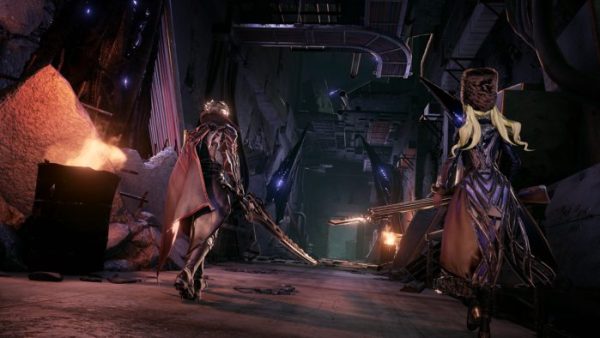
Code Vein is the latest in a long line of games like Dark Souls, but it has quite a few interesting features that help set it apart from the pack. The first, and most obvious, is a much larger emphasis on story with a defined cast of characters, who you can even bring into battle with you.
We had some hands-on time with Code Vein at E3, and it’s clear that the game has the kind of depth Souls fans would want. There’s a variety of equipment to use, and the game’s combat is much more methodical than the studio’s other series, God Eater. Draining blood from your enemies also allows you to use skills that have a variety of effects, like adding frost damage onto your weapons or creating a shield that reduces damage. Code Vein’s phenomenal gothic anime art style is what ties everything together, and it helps give the game a distinct feel, unlike any other game.
Considering Code Vein comes from Bandai Namco, the same company that holds the rights to Dark Souls, this is one to watch out for.
Cyberpunk 2077

Ever since CD Projekt Red redefined the open world RPG with The Witcher 3, fans have been anxiously awaiting any morsel of new on their next project, Cyberpunk 2077. The futuristic RPG took the show by storm this year with a phenomenal in-engine trailer and a behind-closed-doors demo for the press. Our features editor, Alex Gibson, got a look at the game and said it’s unlike any open world RPG he’d ever seen.
Cyberpunk’s dystopic future city is all at once hopeless and vibrant with life, and couldn’t be more different tonally from The Witcher. The game is indeed a first-person RPG and combat has a variety of options, allowing you to use hundreds of different weapons and cyberware skills, like using a claw to climb walls and hold yourself in place.
Cyberpunk’s Night City is a massive environment that you can navigate on foot or by vehicle, and the interactions with NPCs looks organic and believable. It’s clear that CD Projekt’s experience on The Witcher 3 has helped them realize Cyberpunk, but it’s definitely a bold new direction for the developer, and one of the top highlights of this year’s show.
Kingdom Hearts III

Kingdom Hearts III had a big showing at E3, revealing the addition of both the Frozen and Pirates of the Caribbean worlds, both of which look quite different from anything else we’ve seen. We also managed to get some hands-on time with the game and found an experience that was immediately familiar, in a good way.
Playing Kingdom Hearts III was like seeing a childhood friend all grown up, the same thing, but grown and changed. Keyblade transformations are the biggest change to the game’s combat, letting Sora turn his Keyblade into a different form, like a rocket-powered hammer or yo-yos. Further than that, you’re able to use special abilities like hopping on a rocket with Buzz and Woody or jumping in the Teacups theme park ride to spin around the battlefield. Even though our time was short with Kingdom Hearts III, the sheer variety in gameplay was impressive.
Fans may have to wait a little longer to play Kingdom Hearts III, but that extra time to polish can do nothing but help. Between its gorgeous Disney worlds and fast-paced combat, Kingdom Hearts III deservingly garnered a lot of attention this E3.
Dragon Quest XI
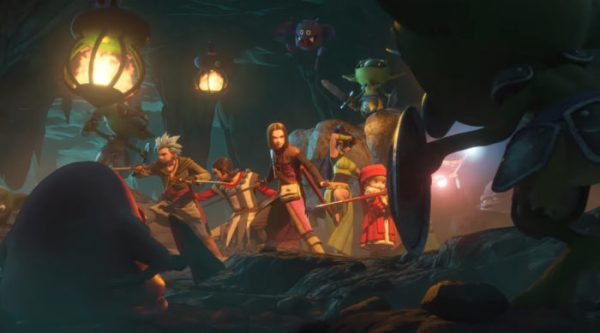
Dragon Quest XI could very well be the biggest and best Dragon Quest game yet, and that’s really saying something. After going hands-on with the game, we left thoroughly impressed and anxiously wanting to play even more. Dragon Quest XI’s graphical style is absolutely gorgeous, and it finally realizes how Akira Toriyama’s character designs can be fully used in a video game. The scale of the game is huge, letting you explore massive castle towns, deserts, and more than just feel substantially larger than past games, with more to do as well.
Despite these big new steps, the core of Dragon Quest XI is still a traditional experience at its core, with traditional turn-based combat, a charming cast of characters, and a plethora of sidequests. A few additions have been made, like a combat mode that actually lets you run around the battle area to get a better view of everything. Still, this is an experience that’ll directly appeal to longtime fans, while being accessible to newcomers as well. Dragon Quest XI looks to be a grand adventure, and with a plethora of dark and gritty games, it’s whimsical aesthetic was a breath of fresh air.
The Surge 2
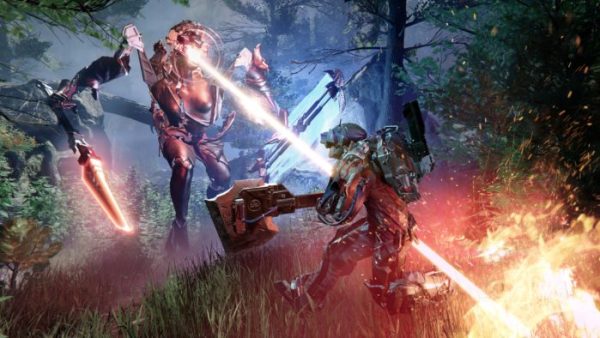
The first Surge was a fairly well received Souls-like, but The Surge 2 may just be one of the biggest surprises of this E3. Deck13, the developer behind The Surge, has thoroughly listened to fan feedback, and it seems like they’re trying to address almost every point of criticism on the first game.
The Surge 2 takes place in an entirely new setting called Jericho City, which has been sealed off by a mysterious barrier. The section we saw in our demo presentation took place in a park in the city, engineered to look like a dense forest. Right off the bat The Surge 2 is making an effort to put more choice in player’s hands, and that starts with a character creator and an expansion of weapon types, from five in the first game to ten. The game has amped up its dismemberment system even more, to the point that dismembering certain body parts on an enemy can disable their special ability, like cloaking, and even give you a new piece of tech that you can then attach to your own equipment.
Our Q&A with The Surge 2’s creative director revealed even more about the work going into the game, and the effort to put more control into player’s hands.
Assassin’s Creed Odyssey

Assassin’s Creed Origins leaned into RPG mechanics than the series has ever before, but it looks like Assassin’s Creed Odyssey is going full-on RPG. Odyssey is all about choice, allowing you to choose whether your hero is a man or a woman for the first time in the series. Another first for the series is the addition of romance options, and even same-sex romance options on top of that, a big step forward for the series.
On top of all that Odyssey introduces branching dialogue, Bioware style choices, intricate stats, quests, and more. All of this is layered on top of the already beautiful graphical engine and systemic gameplay that Origins used, both also present in Odyssey. The colorful hills and seas of Ancient Greece are gorgeously rendered, and the fact that the majority of the voice cast for the game is of Greek descent helps add believability to everything.
After our hands-on time with the game, changes like less intrusive level gating and new conquest battles add even more to the experience. Even though much of Odyssey feels exactly like Origins, there’s enough new for Assassin’s Creed fans to be excited.
Valkyria Chronicles 4

Valkyria Chronicles 4 is a return to form for the series, after the poorly received Valkyria Revolution. The intricate strategy systems of the franchise return, with a few meaningful additions along the way.
Valkyria Chronicles 4 actually takes place during the same time frame as the first game, following a new commander named Claude Wallace and Squad E, as they execute the Federation’s last-ditch effort to capture the imperial capital, Operation Northern Cross. The game adds on an entirely new class known as the Grenadier, who can pelt enemies with grenades from long-distance. A new “Brave” system also lets you expend 1 CP when an ally is killed and nearly dead, to boost the abilities of your nearby units in an effort to save them.
The same gorgeous hand-drawn art style is used for Valkyria Chronicles 4, and it looks better than ever. That, along with the changes to gameplay, make the game a promising new entry in the beloved strategy series.
Fallout 76
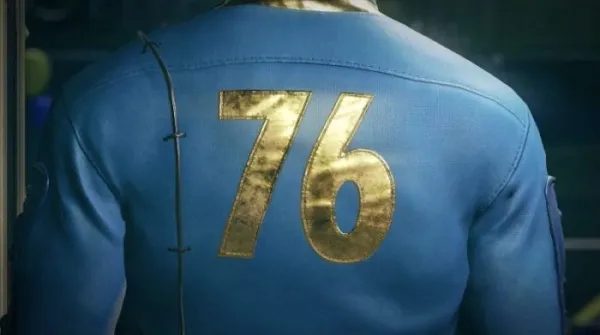
Fallout 76 was one of the biggest surprises of this year, not just because of its announcement, but because of what the game actually is. The newest entry in the franchise is an always-online multiplayer experience that lets you team up with other players to explore a post-apocalyptic version of West Virginia.
Apparently, Fallout 76’s world will be four times larger than Fallout 4’s, and have a larger emphasis on building settlements, this time wherever you want in the world. The game won’t feature any human NPCs, as any and all surviving humans will be other players, but there will be NPCs in the form of robots. Series mainstays like the VATS system will still be in the game, although this time around it’ll be a real-time system that lets you target different body parts.
There’s a lot to be seen about Fallout 76, and if all of its ambitious ideas will really pay off in the end. Single-player fans may be disappointed, but the idea of running around a post-apocalyptic RPG world with other players is certainly attractive.

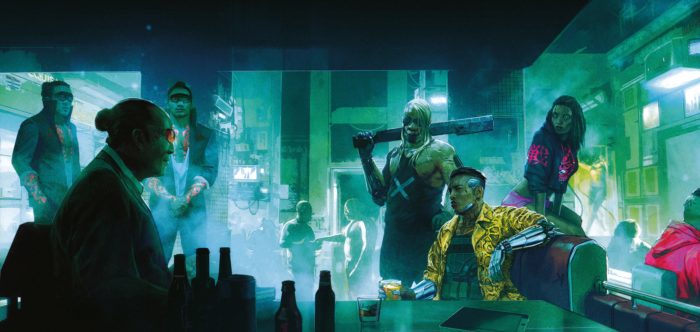












Updated: Jun 20, 2018 03:22 pm